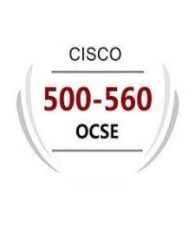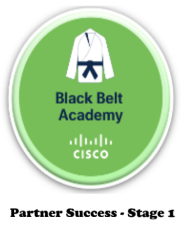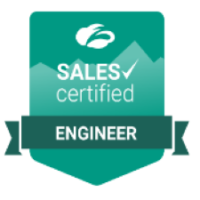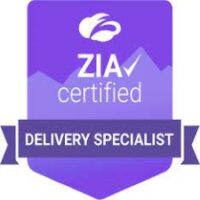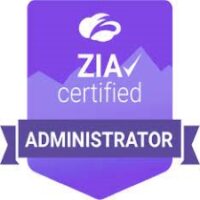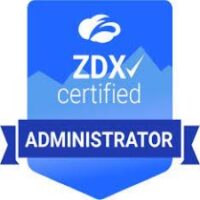In our hyperconnected, dynamic, and distributed world, the traditional security perimeter is vanishing. Applications are moving into the cloud, and users are connecting from everywhere, on all kinds of devices. IoT and OT traffic are exploding, and apps are communicating with each other across clouds. In effect, the network connecting employees, apps, workloads, and devices today is the internet itself. The cloud and data centers have become destinations, with the internet as the transport layer for traffic.
The Zero Trust Exchange provides a platform of services for securing all enterprise traffic and routing it intelligently through the fastest channels. It’s the foundation for secure digital transformation, delivering the agility, security, automation, and experiences your organization needs to move ahead.
The architectural principles underpinning a cloud platform allows to improve negative impacts on the business as well:
Connect users to resources (not to the network!)
Dynamic, shortest, secure path to resources
Cloud native
Full proxy architecture
Outbound tunnels
The Zero Trust Exchange is the only solution able to address all the business outcomes showed in the diagram above. It can mitigate risk and cost, speed up the time to market of new services, improve both the customer and employee satisfaction and, last, but not least, optimize Environmental, Social and Governance requirements.
The comprehensive ZTE platform is instrumental to achieve a secure digital transformation. However, organizations should bear in mind that the road to unlocking the full potential of zero trust is not a straightforward one and requires a level of engagement from the senior leadership to promote and nurture it. Eventually, it will be very rewarding.
Reduction of complexity
With its increased level of visibility and control, a zero trust based architecture removes the complexity of modern IT and allows organizations to focus on getting the outcomes they need from their technology, from higher performance and an enhanced user experience to reduced costs.
Here are some practical examples to demonstrate how business outcomes can be achieved with saving a massive amount of time. Imagine that you want to test the launch of a new service in a specific geography, either an existing location of your organization or a single country. The reasons could be manifold: a new emerging market or a new application that you want to test in a controlled environment.
Whatever the motivation would be, in a few moments an organization can customize a policy that matches their requirements for the geography of their interest; if then everything works as expected maybe the service can be extended elsewhere, or withdrawn in minutes. The huge availability of Public Service Edges across the world of the ZTE and the fact that the policies are downloaded only on the nodes of interest for an individual organization makes the above test easy and hasno impact on the overall performance of the IT infrastructure.
The M&A scenario
Another scenario that is often the cause of headaches for IT teams: a merge and acquisition activity (M&A). Weaving together workforces and working models, application hosting environments, and shared access to resources across a new ecosystem – and doing so securely – is an incredible architectural and engineering effort, and every delay can set you farther back from your targets deadlines. Often such activities last between 12 and 18 months and consumes a huge amount of internal resources. The ZTE platform would simplify such operations by connecting the resources across your organization with no need to address underlying network complexity. Moreover, it protects the company by containing any acquired vulnerabilities or potential compromises instantly when you overlay your risk posture on the acquired network. The bottom line is to be able to deliver seamless access to any cross-organization apps and resources in a secure and timely fashion.
The CIO and CISO have a vital role to play to bring the expanded message of the zero trust boardroom, focusing on how it aligns with business strategy. The decision for what emerging technologies to pursue should be driven by the overall business vision and the organization’s current and future needs, not trends or “cool” factors. Zero trust is here to secure and perform connectivity requirements of emerging trends. So, once the mindset has acknowledged that zero trust is a true business enabler how should organizations go about ensuring a zero trust architecture that successfully achieves these business outcomes?
A zero-trust architecture (ZTA) to enable a secure digital transformation is the answer: a cloud native service that provides employees, partners, and customers with fast, direct, and secure access to external and internal applications, regardless of location, device, or network.
To learn more how Zscaler can support the transformation with the Zero Trust Exchange, read the whitepaper: Working towards NIS2 compliance.
[#item_full_content] [[{“value”:”In our hyperconnected, dynamic, and distributed world, the traditional security perimeter is vanishing. Applications are moving into the cloud, and users are connecting from everywhere, on all kinds of devices. IoT and OT traffic are exploding, and apps are communicating with each other across clouds. In effect, the network connecting employees, apps, workloads, and devices today is the internet itself. The cloud and data centers have become destinations, with the internet as the transport layer for traffic.
The Zero Trust Exchange provides a platform of services for securing all enterprise traffic and routing it intelligently through the fastest channels. It’s the foundation for secure digital transformation, delivering the agility, security, automation, and experiences your organization needs to move ahead.
The architectural principles underpinning a cloud platform allows to improve negative impacts on the business as well:
Connect users to resources (not to the network!)
Dynamic, shortest, secure path to resources
Cloud native
Full proxy architecture
Outbound tunnels
The Zero Trust Exchange is the only solution able to address all the business outcomes showed in the diagram above. It can mitigate risk and cost, speed up the time to market of new services, improve both the customer and employee satisfaction and, last, but not least, optimize Environmental, Social and Governance requirements.
The comprehensive ZTE platform is instrumental to achieve a secure digital transformation. However, organizations should bear in mind that the road to unlocking the full potential of zero trust is not a straightforward one and requires a level of engagement from the senior leadership to promote and nurture it. Eventually, it will be very rewarding.
Reduction of complexity
With its increased level of visibility and control, a zero trust based architecture removes the complexity of modern IT and allows organizations to focus on getting the outcomes they need from their technology, from higher performance and an enhanced user experience to reduced costs.
Here are some practical examples to demonstrate how business outcomes can be achieved with saving a massive amount of time. Imagine that you want to test the launch of a new service in a specific geography, either an existing location of your organization or a single country. The reasons could be manifold: a new emerging market or a new application that you want to test in a controlled environment.
Whatever the motivation would be, in a few moments an organization can customize a policy that matches their requirements for the geography of their interest; if then everything works as expected maybe the service can be extended elsewhere, or withdrawn in minutes. The huge availability of Public Service Edges across the world of the ZTE and the fact that the policies are downloaded only on the nodes of interest for an individual organization makes the above test easy and hasno impact on the overall performance of the IT infrastructure.
The M&A scenario
Another scenario that is often the cause of headaches for IT teams: a merge and acquisition activity (M&A). Weaving together workforces and working models, application hosting environments, and shared access to resources across a new ecosystem – and doing so securely – is an incredible architectural and engineering effort, and every delay can set you farther back from your targets deadlines. Often such activities last between 12 and 18 months and consumes a huge amount of internal resources. The ZTE platform would simplify such operations by connecting the resources across your organization with no need to address underlying network complexity. Moreover, it protects the company by containing any acquired vulnerabilities or potential compromises instantly when you overlay your risk posture on the acquired network. The bottom line is to be able to deliver seamless access to any cross-organization apps and resources in a secure and timely fashion.
The CIO and CISO have a vital role to play to bring the expanded message of the zero trust boardroom, focusing on how it aligns with business strategy. The decision for what emerging technologies to pursue should be driven by the overall business vision and the organization’s current and future needs, not trends or “cool” factors. Zero trust is here to secure and perform connectivity requirements of emerging trends. So, once the mindset has acknowledged that zero trust is a true business enabler how should organizations go about ensuring a zero trust architecture that successfully achieves these business outcomes?
A zero-trust architecture (ZTA) to enable a secure digital transformation is the answer: a cloud native service that provides employees, partners, and customers with fast, direct, and secure access to external and internal applications, regardless of location, device, or network.
To learn more how Zscaler can support the transformation with the Zero Trust Exchange, read the whitepaper: Working towards NIS2 compliance.”}]]

